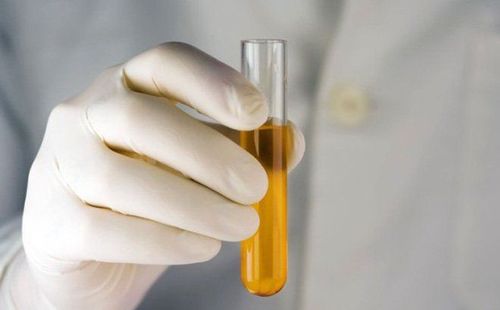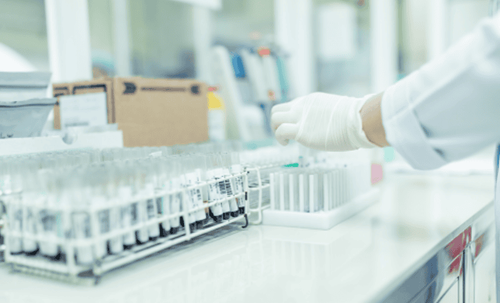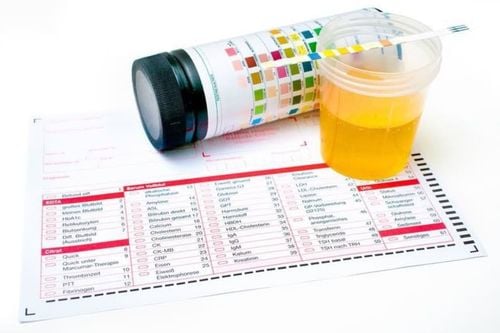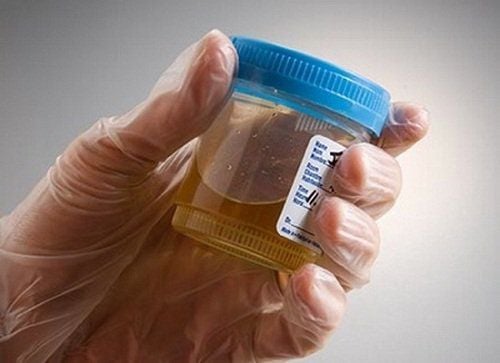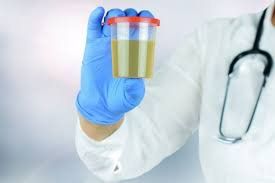MSc. Dr. Do Thi Hoang Ha, Biochemist, Laboratory Department - Vinmec Hai Phong International General Hospital, provided professional consultation for this article. The doctor has 11 years of experience in clinical biochemistry.
Urine is a critical waste-producing fluid that reflects the body's metabolic processes since it contains a variety of waste products. Analyzing urine test markers has significance for measuring organ function, identifying diseases, and monitoring treatment. These include diabetes mellitus, diabetes insipidus, ketosis, urinary tract infections, and liver, kidney, and bile duct problems. It also helps detect hematuria and other pregnancy-related problems early on.
1. Common Indicators Measured in a Urine Test
A standard urinalysis provides the following indicators:
- pH
- Urine specific gravity
- Glucose
- Bilirubin
- Nitrite
- Protein
- Leukocytes
- Urobilinogen
- Red blood cells
- Ketones
- Ascorbic acid
Urine-specific gravity and pH are quantified values, while other indicators, such as leukocytes, nitrite, and protein, are typically present in minimal concentrations or are absent in normal urine. A negative result indicates the absence of abnormalities related to the specific substance, while a positive result suggests potential pathological conditions requiring further evaluation.
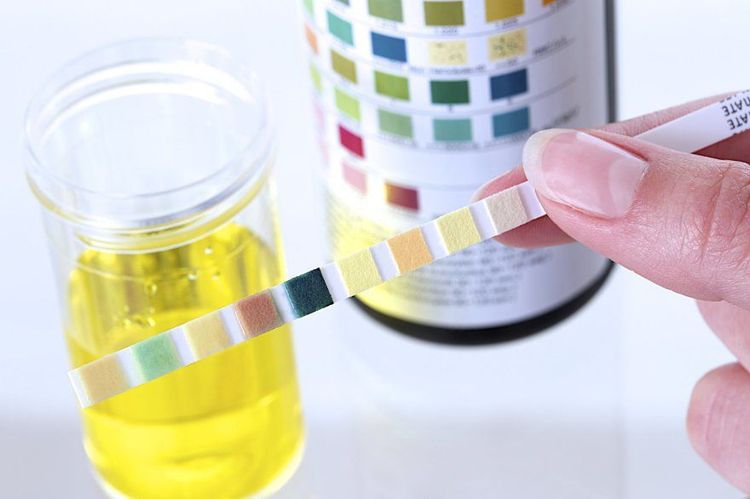
2. Guidelines for Interpreting Urine Test Results
2.1. Leukocyte (LEU)
The presence of leukocytes in urine is detected through the activity of granulocyte esterase, which catalyzes a reaction resulting in color change on the test strip.
- Reference range: Absent or 10-25 Leu/µL.
- Negative result: < 25 Leu/µL, indicating no leukocyturia. However, high glucose, protein, or ascorbic acid concentrations may cause false negatives.
- Clinical significance: Leukocyturia indicates a urinary tract or bladder infection. A confirming urine culture may be necessary for further evaluation. False positives might result from sample contamination or formaldehyde exposure.

2.2. Nitrite (NIT): Nitrite typically does not exist in urine; it only discovers when Gram-negative bacteria are present and the nitrate-to-nitrite conversion occurs. To evaluate Nitrite levels, urine samples should be collected after at least 3.5 hours in the bladder. The Nitrite index test is based on the Griess test for Nitrite, which indicates the presence of bacteria that produce Nitrite.
Forms in urine when gram-negative bacteria reduce dietary nitrate to nitrite. Testing relies on the Griess reaction.
- Reference range: Negative (< 0.06 mg/dL).
- Positive result: ≥ 0.06 mg/dL, suggesting bacteriuria. A positive result indicates a urinary tract infection, which is typically caused by Gram-negative bacteria. Additionally, tainted samples that have been untested for an extended period of time may result in false positives.
- Clinical notes - False negatives A negative result (<0.06 mg/dL) indicates the absence of gram-negative bacteria in urine. False negatives can occur as a result of the presence of gram-positive bacteria, inadequate bladder time, insufficient nitrate in the diet (due to a lack of green vegetables), a high concentration of ascorbic acid in the urine, or the patient taking antibiotics. To obtain reliable findings, the clinical situation must be considered in conjunction with the white blood cell index, urine culture test, and various assays.
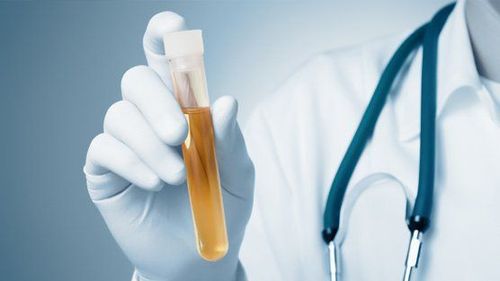
2.3. Protein (PRO)
Proteinuria is assessed via pH-sensitive indicators that react to albumin.
Individuals with normal kidney function have either little or no protein in their urine (in the form of albumin and globulin), primarily plasma albumin, because the glomerular filtration membrane does not allow large molecular weight protein molecules to pass through, so there is insufficient to cause a positive reaction. The Urine Protein test is used on concentrated urine samples to detect changes in protein concentration using a pH indicator.
- Reference range: Negative or trace (≤ 10 mg/dL or ≤ 0.1 g/L).
- A negative result (0.0 - 4.0 mg/dL) shows the absence of albumin (since the dipstick is more sensitive to albumin), but it does not rule out the presence of hemoglobin, globulin, mucoprotein, or Bence Jones Protein in the urine.
- False results: False-positive results may arise if the patient has hematuria, very concentrated urine, a polyvinylpyrrolidone injection, urine collection containers containing chlorhexidine, or quaternary ammonium detergents.
- Clinical significance: Persistent proteinuria indicates kidney dysfunction, preeclampsia, or systemic conditions like hypertension or heart failure. Quantification via a 24-hour urine collection may be necessary.
2.4. Glucose (GLU)
Typically, glucose is absent in the urine because it is completely reabsorbed in the proximal tubules. Glucosuria occurs when blood glucose exceeds the “renal threshold” or tubular reabsorption is impaired. Testing utilizes the glucose oxidase/peroxidase reaction.
- Reference range: 0-100 mg/dL (typical in pregnancy).
- A negative result means no abnormal presence of glucose in the urine. Diabetic patients require an additional fasting blood sugar test for evaluation.
- A positive result suggests a risk of diabetes from kidney illness, diabetes mellitus, renal tubular disease, pancreatitis, excessive sugar consumption, infection, multiple myeloma, or pheochromocytoma.
- The test may be false positive when a patient takes antibiotics, corticosteroids, or non-glucose carbohydrates. False negatives arise when the patient has high levels of ascorbic acid and ketones in their urine.
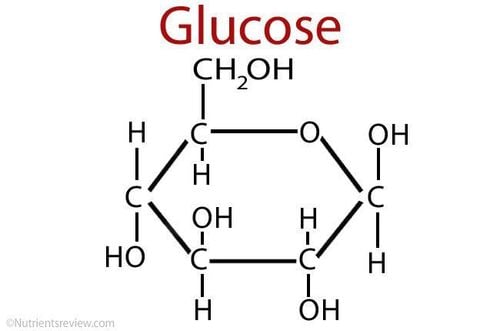
2.5. Ketones (KET)
Urine generally contains relatively little ketones. People with uncontrolled diabetes will have a lack of insulin, therefore, their cells will be unable to use glucose as an energy source and must instead rely on other sources, mostly fatty acids. These fatty acids produce ketone bodies, which are classified into three categories, with the urine ketone test being more sensitive to acetoacetate. As a result, ketones will emerge in urine to assist diagnose diabetes and assess illnesses that cause ketoacidosis.
- The test is based on Legal principles, with an allowed Ketone Index of 2.5-5 mg/dL (0.25-0.5 mmol/L).
- A negative result is normal, and no additional testing is required.
- A positive result indicates a high risk of diabetes, alcoholism, fever or diarrhea, or post-anesthesia.
- False positives occur when the patient has used bromo-sulfophthalein, phenolphthalein, and L-dopa metabolites.
The Ketonic test result should be combined with the glucose result to avoid missing the case when the results are inconsistent.
2.6. Urobilinogen (URO)
In general, Urobilinogen is a metabolic product of conjugated bilirubin (direct bilirubin) produced by intestinal bacteria in the duodenum. It is excreted primarily through the stool and appears in the urine at low concentrations but increases in cases of severe infection, G6PD enzyme deficiency, hemolytic anemia, liver dysfunction, and excessive red cell breakdown. Urobilinogen test results must be paired with bilirubin data for a differential diagnosis.
The test is based on the Ehrlich reaction (combined with diazonium salt):
Allowable index: 0.2-1.0 mg/dL or 3.5-17 mmol/L.
A negative result (normal limit 0.1-1 EU/dL) does not show any abnormalities, no further testing is required. False negatives may occur if the urine is left for too long or the patient has used antibiotics.
A positive result requires further testing to assess liver and biliary function as well as hemolytic anemia. False positives may occur due to atypical color, para-aminosalicylic acid, or patients with porphyrinuria.

2.7 Bilirubin (BIL)
The breakdown of hemoglobin produces bilirubin. Although direct bilirubin can pass through the glomerular filtration barrier, it cannot be identified in urine because it is transformed to urobilinogen in the colon. The abnormal presence of bilirubin in urine indicates the possibility of liver illness or biliary system disease (which prevents bilirubin from entering the bloodstream, filtering through the kidneys, and excreting in the urine).
- Reference range: < 0.2 - 0.4 mg/dL (3.4 - 6.8 mmol/L).
- A negative result is normal; no further testing is required. False negatives appear if the urine test is left in the light for a long time, the concentration of ascorbic acid in the urine is high.
- A positive result requires a urobilinogen test for differential diagnosis. Phenothiazide and chlorpromazide, salicylates may cause false positive results.
2.8 Blood (BLD)
Hematuria, hemoglobinuria, or myoglobinuria may indicate urinary tract or renal pathology.
Allowable index: 0.015-0.062 mg/dL or 5-10 Ery/UL.
A negative result is normal, if the patient is at high risk, a repeat urine test is needed to check. False negatives occur when formaldehyde is present in the urine.
A positive result needs to be combined with other test results for diagnosis. A persistent positive result in people over 40 years old may be due to urinary tract cancer (bladder cancer, renal cell carcinoma). The test is falsely positive if the woman is menstruating, exercising heavily, the concentration of ascorbic acid in the urine is high, the container is contaminated with antiseptics, the urine is left for too long, or due to washing the perianal area with povidone.

2.9. Ascorbic Acid (ASC)
When the result is 20 mg/dL of Ascorbic Acid in urine, the test is positive; otherwise, it is negative. High levels of ascorbic acid in urine can result in false negatives for glucose, blood, leukocytes, nitrite, and bilirubin. Ascorbic acid in urine samples helps to lower the possibility of erroneous test results in various conditions. When the patient consumes a high concentration of vitamin C, the test may produce a false positive.
The allowed index ranges from 5 to 10 mg/dL or 0.28 to 0.56 mmol/L.
2.10. Urine Specific Gravity
Urine-specific gravity helps assess the kidney's ability to concentrate and dilute. Normal urine specific gravity is about 1.005 - 1.030.
Increased urine specific gravity is related to dehydration (syndrome of inappropriate antidiuretic hormone secretion), frequent vomiting, diabetes, acute diarrhea, frequent vomiting, fever...
Decreased urine specific gravity is related to excess water (renal dysfunction, aldosterone syndrome).
2.11. Urine pH
Urine pH provides information related to the patient's acid-base status. Normal pH is between 5.0 - 7.0
Alkaline urine (pH > 7.0) can occur when the patient eats a lot of vegetables and has urinary tract infections, kidney infections, or bladder infections.
Acidic urine (pH < 5.0) can occur when the patient eats a lot of meat, exercises, or has acute diarrhea, malnutrition, or metabolic disorders in diabetes.
Conclusion Each parameter in urinalysis holds clinical significance and, when combined with other diagnostic tests, aids in the comprehensive evaluation of patient health.
To arrange an appointment, please call HOTLINE or make your reservation directly HERE. You may also download the MyVinmec app to schedule appointments faster and manage your reservations more conveniently.





